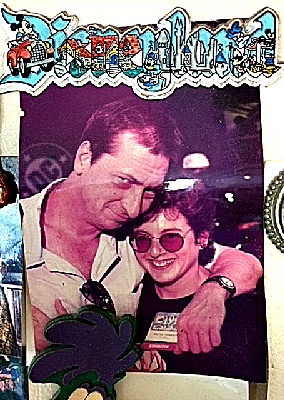Martha Thomases: The Cool Kids
 It would be my guess that, until recently, most people who loved comic books were not the sort who were popular in high school. We weren’t prom kings and queens. We weren’t elected to student council. Sometimes, we weren’t even the stoners.
It would be my guess that, until recently, most people who loved comic books were not the sort who were popular in high school. We weren’t prom kings and queens. We weren’t elected to student council. Sometimes, we weren’t even the stoners.
To some extent, that’s changed now. Comics, or at least comic book properties are cool now. Celebrities compete to see who has the most geek cred.
Therefore, to people who are as socially insecure as I am, it’s possible to feel that comics is not the safe haven of fandom that it was in the old days. (To be fair, when I’m really feeling it, I’m too insecure to feel accepted anywhere, which is my problem, not yours.)
It was not always like that. And two books by my pal Jackie Estrada celebrate the days when comic book folks could create a place where we were the cool kids.
For those of you who don’t know, Jackie runs the Eisner Awards, and she is publisher of Exhibit A Press. Since the 1970s she’s taken zillions of photographs at various comic book events, especially the San Diego Comic-Con. She was influential in adding Artists’ Alley to conventions. I know her best through Friends of Lulu, since we were both on the first few Boards of Directors.
Jackie has put together two volumes of photographs from various comic-book events, Comic Book People: Photographs from the 1970s and 1980s and Comic Book People: Photographs from the 1990s. They both feel, to me, very much like looking at old high school yearbooks.
Both books are organized in similar ways. The photographs are grouped in chapters, starting with the legends of the field — Jack Kirby, Harvey Kurtzman, Will Eisner, Bob Kane, Siegel and Shuster, Stan Lee, and their ilk — then to writers, artists, inkers and colorists, editors, marketing people, retailers and others. A lot of the same people appear in each volume, usually with more hilarious hair in Volume 1.
Each photo has a caption explaining who the person or people are, their work at the time, and sometimes, why they are making such ridiculous faces. Jackie herself is in many of them, enjoying the company of her friends and “family.”
Because the comics industry was very much like a family. Especially in that first volume, we see a group of people who are being noticed for their achievements by their peers, often for the first time. In those long ago, pre-Internet days, there weren’t always credits in comics, so finding out who was responsible for your favorite stories could require some real sleuthing. Maybe I’m projecting, but I see surprise and pride in those faces, enjoying some well-deserved recognition and appreciation.
Instead of being ridiculed for liking and making comics, they are finally with a group of people who share that affection.
I didn’t go to many comics events until the 1990s. In the late 1970s and 1980s, I tended to just go to New York-based parties, usually with Denny O’Neil, because, as a freelance writer, I appreciated passed hors d’oeuvres and an open bar. I knew the folks at Upstarts (Walter Simonson, Howard Chaykin, Frank Miller, Bill Sienkiewicz) and, later, when I worked at Marvel, I knew Archie Goodwin, Mary Wilshire, Trina Robbins and Louise Simonson. I met Howard Cruse at a Village Voice holiday party.
I recognize a few of the people in the first volume, but it’s the second one that sends me back to my high school neuroses. There are my colleagues at DC. There are people who make me squee and people who make me blush and people who I think are so cool that I can only stammer around them. There are people whose work I love but with whom I never connected personally, and people I adore whose work occasionally leaves me cold.
Jackie can’t be everywhere, and there are, inevitably, some people who I think should be represented and aren’t. Among these are Larry Hama, Mark Millar, Bob Rozakis, Lou Stathis, Gerry Jones, Keith Giffen and Shelly Bond. Maybe they loomed larger in my experience than they did in Jackie’s. That’s fair. Maybe they were just camera shy. That’s fair, too.
I want to be in the photographs with all of these folks, just like Jackie is, but I am not, and that makes me feel unpopular. As an adult woman of 62, these emotions are unbecoming.
You, Constant Reader, will probably not find yourself awash in insecurity when you look at these pages. Instead, you’ll see (especially if you get both books) how an entertainment industry grew up and grew close. You’ll see curly shag haircuts give way to well-trimmed styles (or baldness). You’ll see more women and people of color as the years go on. You’ll notice some of the legendary older folks passing on, but loads of talented new kids hoping for a place at the table.
Because our table is now the cool kids table. Everyone wants to be with us.











